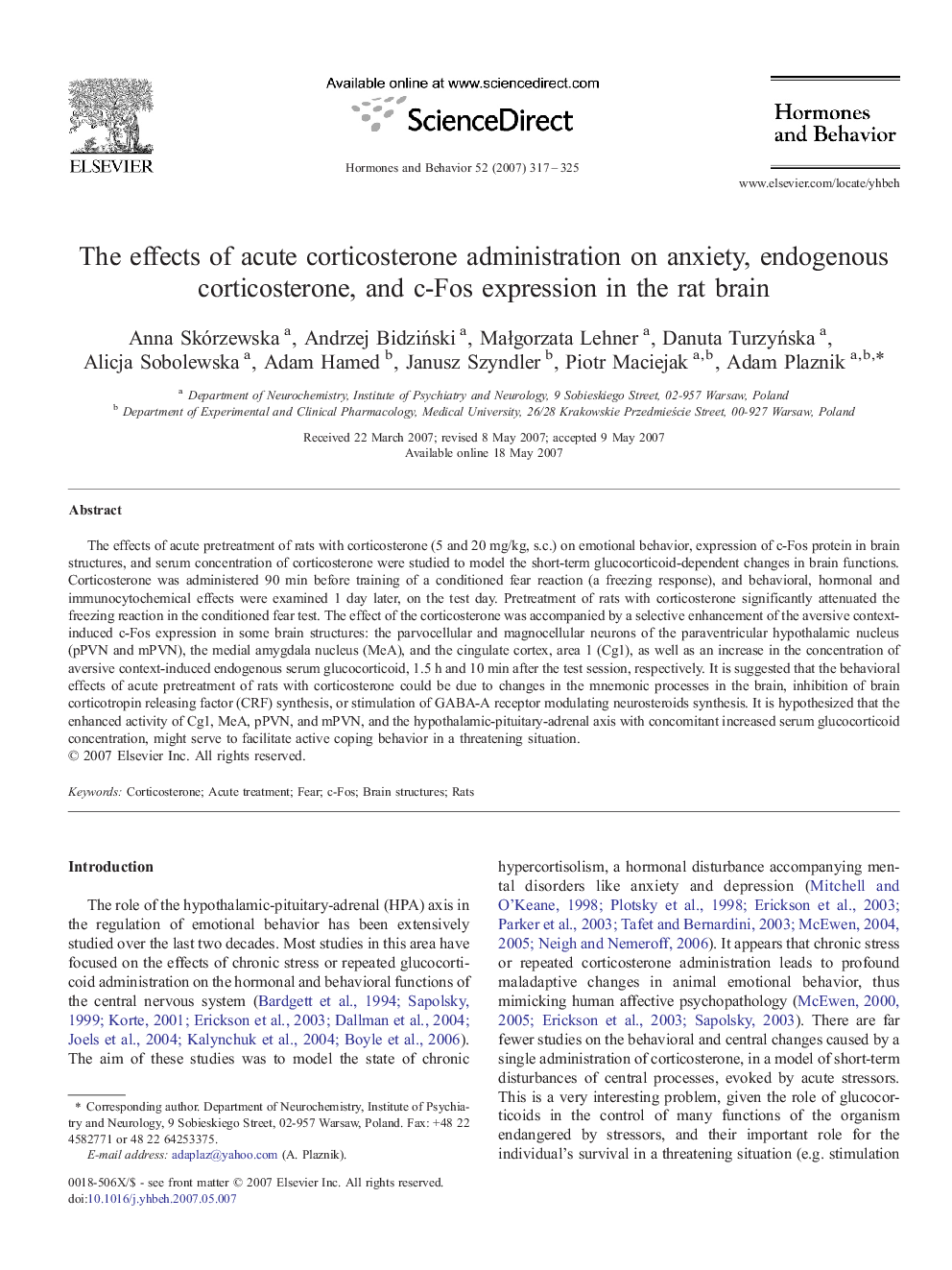| Article ID | Journal | Published Year | Pages | File Type |
|---|---|---|---|---|
| 323555 | Hormones and Behavior | 2007 | 9 Pages |
The effects of acute pretreatment of rats with corticosterone (5 and 20 mg/kg, s.c.) on emotional behavior, expression of c-Fos protein in brain structures, and serum concentration of corticosterone were studied to model the short-term glucocorticoid-dependent changes in brain functions. Corticosterone was administered 90 min before training of a conditioned fear reaction (a freezing response), and behavioral, hormonal and immunocytochemical effects were examined 1 day later, on the test day. Pretreatment of rats with corticosterone significantly attenuated the freezing reaction in the conditioned fear test. The effect of the corticosterone was accompanied by a selective enhancement of the aversive context-induced c-Fos expression in some brain structures: the parvocellular and magnocellular neurons of the paraventricular hypothalamic nucleus (pPVN and mPVN), the medial amygdala nucleus (MeA), and the cingulate cortex, area 1 (Cg1), as well as an increase in the concentration of aversive context-induced endogenous serum glucocorticoid, 1.5 h and 10 min after the test session, respectively. It is suggested that the behavioral effects of acute pretreatment of rats with corticosterone could be due to changes in the mnemonic processes in the brain, inhibition of brain corticotropin releasing factor (CRF) synthesis, or stimulation of GABA-A receptor modulating neurosteroids synthesis. It is hypothesized that the enhanced activity of Cg1, MeA, pPVN, and mPVN, and the hypothalamic-pituitary-adrenal axis with concomitant increased serum glucocorticoid concentration, might serve to facilitate active coping behavior in a threatening situation.
